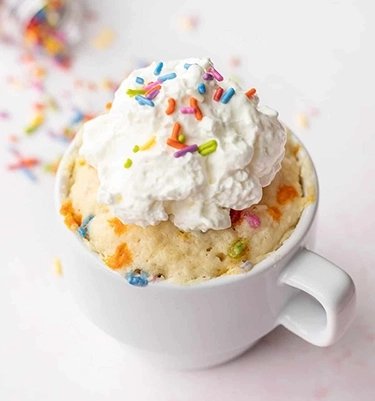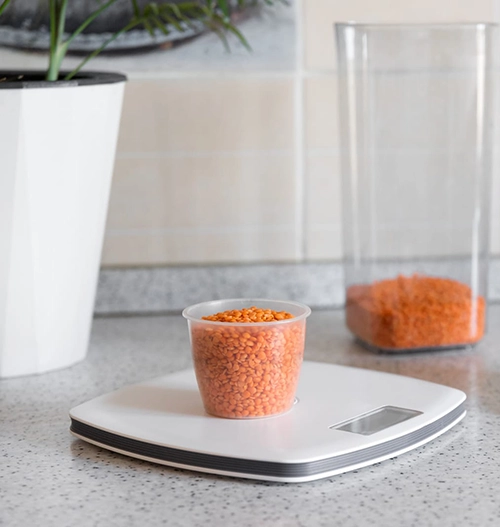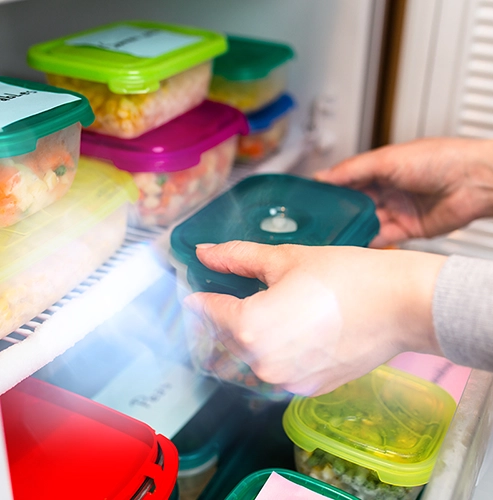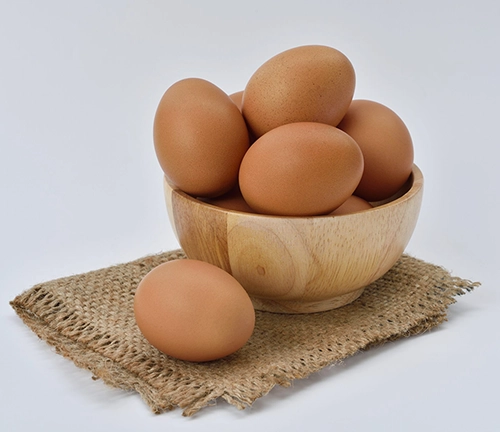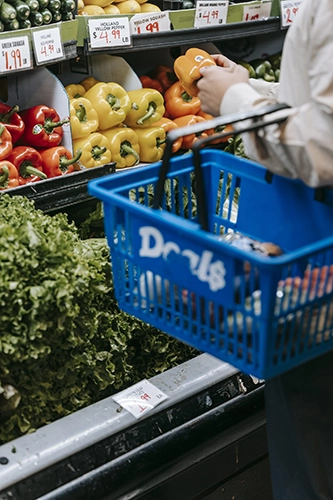Cooking for One: The Ultimate Solo Kitchen Guide
Have you ever found yourself staring at a recipe meant to serve an entire family and wondered, “How do I reduce this to serve just me?” You’re not alone. The world of cooking for one can seem daunting – it’s often depicted as lonely, wasteful, and overly complicated. But we’re here to debunk those myths and guide you through the joy and simplicity that can come from the art of cooking for one.
Cooking for one can be both a challenge and a rewarding experience. While it may seem like there’s no point in putting in effort for a meal just for yourself, it’s important to recognize the value in treating yourself to a wholesome, home-cooked meal. By learning the right techniques and discovering recipes tailored to the single diner, anyone can master the art of cooking for one and enjoy delicious meals without feeling overwhelmed or wasteful.
In this blog post, we’ll dive into the tips and tricks for efficient grocery shopping, meal planning, and food storage to make cooking for one a seamless experience. Furthermore, we will provide a selection of good meal ideas covering a wide range of tastes and dietary preferences. So, whether you’re a busy professional, a student, or simply someone who enjoys their own company, prepare to embark on a flavorful journey designed just for you.

Why Cooking for One Can Be Fun and Easy
Contrary to popular belief, cooking for one doesn’t have to be a tedious task, nor does it mean you’re confined to a limited menu. In fact, it presents a unique opportunity to make your meals more personal, exploratory, fun, and easy. Here’s why cooking for one can be a joy rather than a chore.
Flexibility with Ingredients
When cooking for yourself, you become the master of your kitchen domain. This means you have complete control over what goes into your meals. Love mushrooms but detest olives? Go ahead, double up on those mushrooms in your pasta. Your favorite spice isn’t to everyone else’s taste? Well, when you’re cooking for one, you’re the only taste bud that matters! You have the freedom to use whatever ingredients you prefer, making every meal a personalized dining experience. This kind of flexibility allows you to cater to your own tastes and dietary requirements without having to consider anyone else’s preferences.
Mastering Portion Control
Solo cooking can also serve as a wonderful tool for mastering portion control. We often tend to overeat when we’re served large portions or when we have extra food left on the stove. When you’re preparing meals for yourself, you can control the quantity of each ingredient, helping you create balanced, nutritious meals that are the perfect size for you. This way, you’ll likely eat healthier and reduce food waste as well
An Opportunity to Experiment
Cooking for one is your ticket to culinary creativity and one of the best ways to experiment. It’s the perfect chance to experiment with new recipes, flavors, and cooking techniques without the pressure of pleasing others. Want to try your hand at making sushi or to concoct your own pasta sauce recipe? Go for it! If it doesn’t work out as planned, you’re the only one who needs to know. With every cooking experiment, you’ll learn and improve, and who knows, you may even stumble upon your new favorite dish!
In a nutshell, cooking for one is not about solitude or monotony. It’s about embracing the freedom to eat what you want, how you want, and when you want. It’s about savoring the joy of creating something from scratch and enjoying it at your own pace.
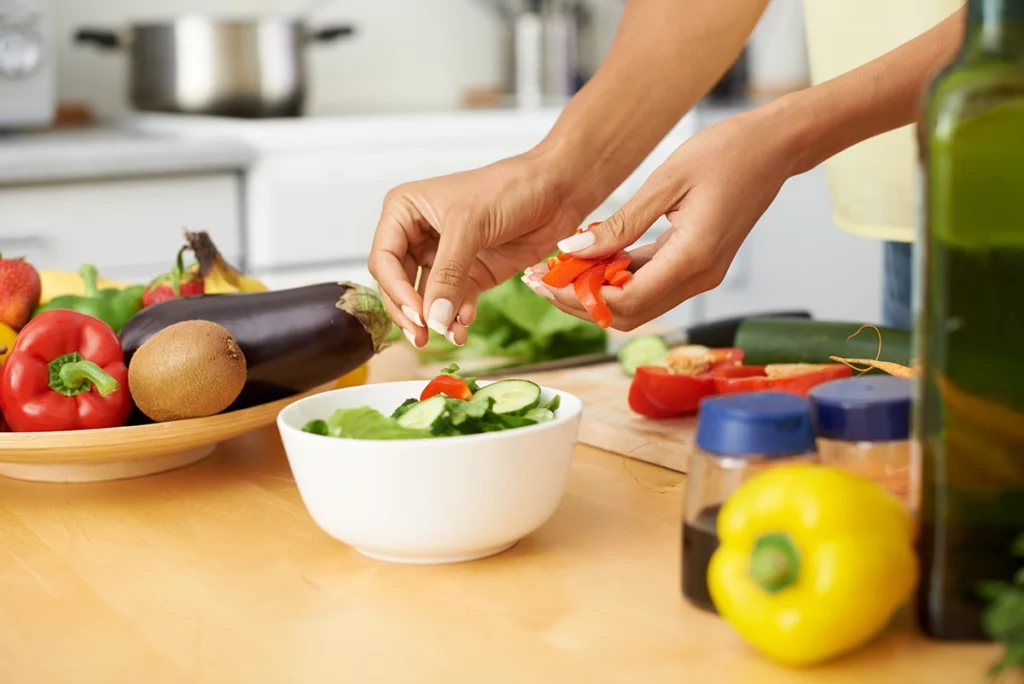
Cooking for One Dietary Requirements
When you are just getting started cooking for one, it’s important to consider individual dietary requirements before you jump into planning meals. Some common dietary restrictions include:
- Vegetarian
- Vegan
- Gluten-free
- Dairy-free
- Nut-free
Understanding your dietary requirements is crucial for planning satisfying and nutritious meals. It’s possible to make adjustments to recipes or find alternatives that cater to specific dietary restrictions. Your next step would be to scale those meals for one person.
Setting a Realistic Budget
The next step in cooking for one is determining a budget for meals so that you are able to make smart decisions when grocery shopping and meal planning. Some strategies to save money include:
- Buying in-season produce
- Taking advantage of sales and discounts
- Opting for budget-friendly proteins
- Shopping the freezer aisle for ingredients you need less of
- Using a local butcher or deli for individual portions of meat and cheese
Setting a realistic budget can help individuals stick to it and avoid overspending on groceries. In the long term it can also help you to have less waste and leftovers when you are cooking just for yourself.
Time Constraints
Time is a valuable resource for everyone, especially for those who are cooking solo. Assessing your available time for meal preparation can affect the types of recipes chosen. Some tips for saving time in the kitchen include:
- Meal or food prepping: Prepare multiple meals or bulk prep ingredients at once and store them for later consumption.
- Utilizing time-saving kitchen tools like air fryers, slow cookers, and choppers
- Opting for easy-to-prepare recipes with minimal steps and fewer ingredients
The Art of Meal Planning for One
Mastering the art of meal planning can be a game-changer, especially when you’re cooking for yourself. While it may initially seem like an extra chore, the benefits are multifold. It reduces stress, saves time, leads to healthier choices, and minimizes waste. But how exactly do you plan meals effectively when you’re only cooking for yourself? Below we dive into some tips and steps to make this process easier.
The Importance of Meal Planning for One
When you’re cooking for one, it can be tempting to opt for takeout or prepackaged meals, but these options can be heavy on the wallet and light on nutrition. That’s where meal planning comes into play.
Meal planning is the simple act of taking some time each week to plan your meals and snacks. This simple strategy ensures that you always have delicious and nutritious meals ready, without resorting to less healthy, more expensive alternatives.
Meal planning can help you maintain a balanced diet, making sure you’re getting a variety of nutrients throughout the week. It also allows you to make the most of your grocery haul, reducing waste by ensuring you use up everything you buy. Meal planning can be a simple as roughly planning which days you will be eat at home vs. meeting a friend for dinner and what types of meals you want to have on those days.
Plan Ahead for Culinary Success
Planning is key when it comes to successful meal planning. At the start of each week (or whenever works best for your schedule), take some time to consider what you’d like to eat for the upcoming days. Look at your calendar, consider your upcoming commitments, and create a flexible meal plan.
Creating a Shopping List
After you have decided on your weekly meal plan you’ll want to create a shopping list. This helps you to purchase only the necessary ingredients for your meal plan. You’ll want to pick recipes that include overlapping ingredients so that you can minimize food fatigue and have less leftovers. Here are some tips for creating an effective shopping list:
- Plan meals for the week, considering breakfast, lunch, dinner, and snacks
- Know your weekly schedule: Do you have a work lunch this week where you will not need to pack a lunch? Do you have dinner with friends? Account for all of this while you are planning your meals
- Note ingredients needed for each recipe: Can you use ingredients that overlap with different recipes? For example: Making a Chicken Parmesan meal one night and a chicken stir fry the next night will use similar staple ingredients that you can purchase just once
- Check your pantry, freezer, and refrigerator for items you already have so that you do not over buy ingredients that don’t have a purpose for that week
- Organize your list by grocery store sections for better navigation
Meal Prepping Strategies
If the idea of cooking a fresh meal every night seems a bit overwhelming as a single person, or if your schedule doesn’t allow for nightly culinary adventures, there’s a fantastic solution for you: meal prepping. Contrary to what you might think, meal prepping when you’re cooking for one doesn’t have to mean spending hours in the kitchen on your days off, nor does it mean eating the same meal day after day. With a little planning, you can transform your cooking routine into a streamlined, stress-free process.
Bulk Prep, Easy Cook Healthy Meals
Meal prepping often conjures up images of rows of identical containers, each holding the same meal. However, that doesn’t have to always be the case! There are other styles of meal prep that can give you a more flexible approach such as bulk prepping ingredients. Instead of preparing entire meals, you can prepare individual ingredients to mix and match throughout the week.
For instance, you might roast a batch of vegetables, cook a pot of quinoa, grill some chicken breast or tofu, and make a homemade dressing with olive oil and vinegar. Now, with your pre-prepared components, you can easily assemble a variety of meals throughout the week without being stuck eating the same boring meals for five days. When you are ready to eat simply mix your veggies, protein, and quinoa for a hearty salad one day, and the next, stir-fry the same components with some additional spices and a new sauce for a completely different flavor profile.
Strategies for Effective Meal Planning
Meal planning can make cooking for one much easier and planning meals doesn’t need to be complicated or rigid. Here are some strategies to make meal planning for one a breeze:
- Prepare versatile ingredients: Cook grains, proteins, and vegetables that can be mixed and matched for multiple meals.
- Think in Terms of Components: Instead of planning different recipes for each meal, think in terms of components: proteins, grains, vegetables, and flavors (like sauces, herbs, and spices). This way, you can mix and match these components to create a variety of meals throughout the week.
- Embrace Small Batch Cooking: Prepare larger quantities of basic ingredients like grains, black beans, roasted veggies, or protein at the start of the week. You can then use these in different meals throughout the week, saving you time and effort on busy nights.
- Utilize Your Freezer: Freezing meals or meal components can be a lifesaver. Cooking a small batch of your favorite soup, curry, or stew? Freeze individual servings for future use. Similarly, you can freeze cooked grains, beans, or even chopped veggies for quick and easy meals.
- Plan for Leftovers: If you’re making a dish, plan to have it twice in a week, or transform the leftovers into a new meal. For example, last night’s grilled chicken can be today’s salad topper.
- Portion and store meals: If you are short on time you can always create one recipe then divide and store those meals in individual containers for grab-and-go convenience.
Remember, meal planning is all about making your life easier. It doesn’t have to be perfect. Start with planning just a few meals a week and gradually increase as you get comfortable with the process. With a bit of practice, meal planning can become second nature and your solo meals will be as varied, delicious, and stress-free as ever.

Maximizing Your Pantry and Freezer
Your pantry and freezer can be your best allies. By cleverly using pantry staples and maintaining a well-stocked freezer, you can whip up a variety of meals with minimal effort and fewer trips to the grocery store. Here’s how to make the most out of these invaluable resources.
Harness the Power of Pantry Staples
A well-stocked pantry is a treasure trove for the solo cook. Keeping it filled with non-perishable items such as pasta, grains, canned goods, a variety of spices, oils, and condiments can make meal preparation a breeze. When you have a base of pantry staples, you’re already halfway to a delicious meal.
For example, pasta can quickly transform into a delightful dinner with the addition of a simple sauce and some veggies. Canned beans can be the hero of a hearty salad or soup, and grains like rice, quinoa, or bulgur can serve as the base for countless dishes. Vinegar, Olive Oil, and Brown Sugar can be kept on hand to make a tasty sauce or dressing. Having these versatile ingredients at your disposal means you’re always just a few steps away from a meal with ingredients you already have on hand.
Building a Freezer Stash of Delicious Meals
Having a selection of freezer-friendly meals at your fingertips can be a lifesaver on busy days or when you’re simply not in the mood to cook and don’t have any fresh foods available. Invest some time in preparing and freezing meal portions that can be easily reheated when needed. Dishes like casseroles, soups, stews, and cooked grains are all excellent candidates for freezing.
Don’t forget about leftovers! Freezing leftovers not only helps minimize waste but also is an easy way to keep a variety of meal options ready to go. For example, if you are making a chili one night but don’t want to have chili all week you might freeze the remaining portions for a quick meal in the future. These small batch meals can then be re-invented into new meals or enjoyed as is, saving you time and effort. Here are some ideas to re-invent your leftover chili into different meals:
- Chili Stuffed Peppers: Scoop the chili into hollowed-out bell peppers, top with cheese, and bake until the peppers are tender and the cheese is melted.
- Chili Mac and Cheese: Combine the chili with cooked macaroni and cheese sauce for a flavorful twist on classic mac and cheese.
- Chili Nachos: Layer tortilla chips with chili, cheese, jalapeños, and any other desired toppings, then bake until the cheese is melted and bubbly.
- Chili Baked Potatoes: Top baked potatoes with warmed chili, cheese, sour cream, and green onions for a hearty and satisfying meal.
- Chili Dogs: Serve your leftover chili on top of a hotdog in a bun for a nostalgic quick dinner.
- Chili Salad: Use leftover chili as a flavorful topping for a bed of greens, adding toppings like diced tomatoes, shredded cheese, avocado, and dressing of your choice.
We like to use Souper Cubes to build our Freezer stash
What are Super Cubes? Souper Cubes are a great addition to your kitchen! They sturdy silicone trays with compartments with lids. They are designed for portion control and easy storage for single serving meals. The individual cubes, once frozen, can be popped out and stored in a freezer bag or container, freeing up the tray for more recipes. These are great to add to your kitchen when cooking for one, as it allows you to make larger batches of soups, stews, or sauces and then freeze individual servings for later use and no waste.
Investing time in planning meals, creating shopping lists, and employing meal-prepping strategies can significantly improve the cooking experience for a single individual. Furthermore, utilizing pantry staples and the freezer can help streamline meal preparation while minimizing waste and grocery store trips.
Choosing Your Cooking Style: Single Serve Meals vs. Small Batch Cooking
When it comes to cooking for one, finding a style that suits your lifestyle can make all the difference. Two popular approaches are single serve meals and small batch cooking. Each has its own advantages and potential drawbacks, and understanding these can help you decide which approach is best for you.
Exploring Single Serve Meals
If you love variety and enjoy cooking, single serve meals could be your ideal solution. These meals, tailored specifically for one, allow you to try different dishes every day. The key benefits of single serve meals include:
- Perfect and Smaller Portions: You prepare just what you need, which can help avoid overeating and control portions.
- Minimized Waste: By cooking only what you’ll eat, you reduce the chances of food waste.
- Daily Variety: With no leftovers to work through, you can enjoy a different meal every day if you wish.
But be mindful, there could be a few challenges:
- Cooking Time: Preparing meals frequently means investing time in the kitchen, and often, the preparation and cooking time for a single serving is nearly as long as cooking in bulk.
- Cost: Buying ingredients for single serve meals might sometimes be costlier compared to purchasing in larger quantities.
Discovering Small Batch Cooking and Meal Prep
If you’re pressed for time or prefer to cook less frequently, small batch cooking or meal prep may be the way to go. This approach involves preparing several servings of a meal at once and saving the extras for later. Here are some of the advantages:
- Economical: Buying and cooking in bulk can often save money and time.
- Efficient: Preparing multiple meals at once reduces the amount of time you need to spend cooking throughout the week.
- Balanced Eating: With planned and prepared meals on hand, is a great way to maintain a nutritious diet.
However, small batch cooking may present a few hurdles:
- Storage Needs: You’ll need enough fridge or freezer space to store the additional meals.
- Limited Variety: While you can mix and match to some extent, you may find yourself eating the same meal multiple times in a week which can lead to food fatigue.
Ultimately, the choice between single serve meals and small batch cooking depends on your personal lifestyle and preferences. Both methods offer benefits and require certain considerations. Embrace the method that resonates most with your cooking style, or better yet, blend both approaches to create a flexible cooking plan that’s uniquely suited to your needs! For example, it might make sense to batch prep or meal prep your lunches since you need a quick meal to grab and go while you aren’t home and then create single serving meals for dinner when you have more time. There’s no right or wrong approach here.
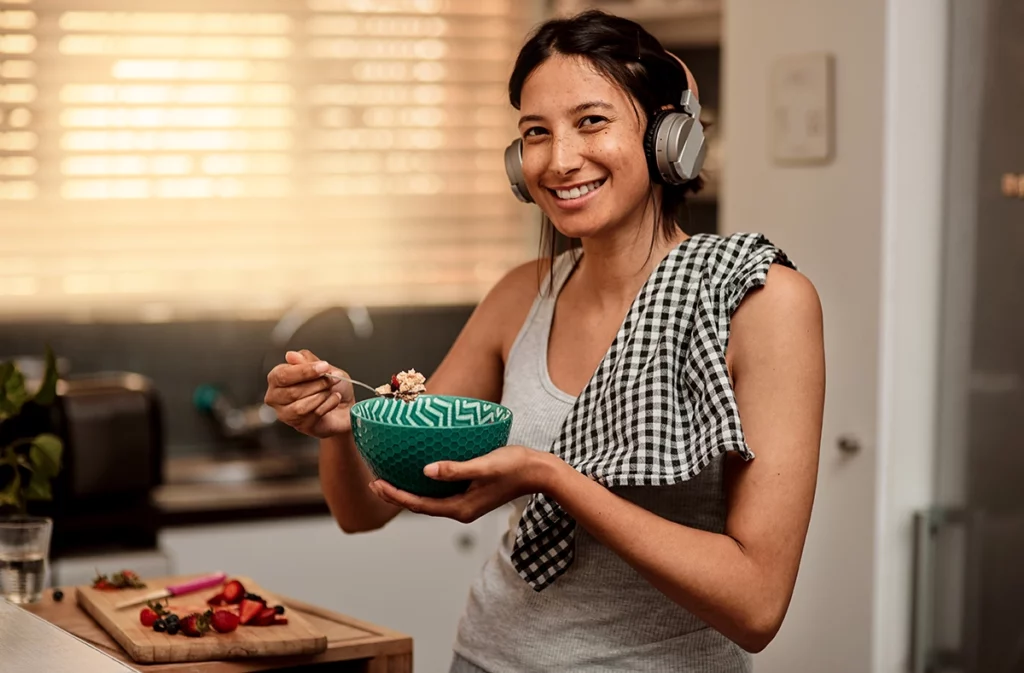
Mastering Cooking Techniques: The Solo Chef’s Guide
With the right techniques, you can whip up diverse, delicious dishes that cater perfectly to your palate when you are cooking for yourself. Here are some versatile cooking methods to consider when cooking solo:
Air Frying: The Easiest Way to Make a Fast Dinner
An air fryer can be your best friend when cooking for one. This popular kitchen gadget uses hot air circulation to ‘fry’ foods without the need for excessive oil, reducing calorie and fat content without compromising taste or texture. From vegetables and proteins to guilty pleasure snacks, air fryers offer a healthier twist on traditional frying. They’re available in various sizes to suit your needs and can easily accommodate single servings. The bonus: it’s a kitchen appliance that doesn’t take up too much countertop space!
Roasting: Unlocking Rich Flavors
Roasting is a cooking technique that enhances the natural flavors of your ingredients. It involves using dry heat, often in an oven, to cook your food to perfection. It’s ideal for smaller cuts of meat like chicken breasts or fish filets, and for enhancing the sweetness in vegetables like brussel sprouts, bell peppers, onions, or tomatoes. The result? Tender, juicy dishes brimming with flavor. The best part? You can do all of this right in your oven and multi task while your dinner is cooking.
Stir-Frying: Quick, Easy, and Nutritious
Stir-frying is a time-saving technique that delivers flavorful, balanced meals. By quickly cooking small, evenly-sized pieces of food in a hot pan with a bit of oil, you can put together a nutritious meal in minutes. The versatility of stir-frying allows you to experiment with a variety of ingredients – from different meats to an array of vegetables, and even noodles.
Steaming: Simplicity at Its Best
For simplicity and health, it’s hard to beat steaming. This technique involves cooking food in the steam from boiling water, retaining more nutrients and making dishes easier to digest. Whether it’s vibrant vegetables like broccoli and carrots, or lean proteins such as fish or chicken, steaming offers a healthy, straightforward cooking option. With a steamer basket or a microwave steamer, you can steam your meals with minimal equipment and effort.
Microwaving: Convenience is Key
For the solo cook in a hurry, the microwave oven can be a lifesaver. From pre-packaged, single-serving meals to simple homemade dishes like oatmeal or scrambled eggs, the microwave is a convenient solution. It’s also perfect for reheating leftovers, ensuring you can enjoy your small-batch cooking efforts over several meals.
Remember, cooking for one is an opportunity to explore and experiment. By mastering these techniques, you can enjoy a variety of tasty, nutritious meals that fit into your lifestyle with ease.
Kitchen Essentials: The Solo Cook’s Toolbox
While cooking for one might seem straightforward, having the right tools in your kitchen can significantly streamline the process. The following kitchen essentials will not only make your cooking endeavors more efficient but will also enhance the quality and variety of your meals.
1. Quality Chopping Knife
At the heart of every kitchen is a good-quality chopping knife. A sharp, well-balanced knife can make food preparation safer, quicker, and more enjoyable. Whether you’re chopping vegetables, slicing meat, or mincing herbs, a versatile chef’s knife is a worthwhile investment.
2. Cutting Board
A durable cutting board is another essential tool. Opt for a material that is easy to clean and gentle on your knives, such as wood or bamboo. Having a dedicated surface for food preparation helps maintain cleanliness and provides a stable area for chopping and slicing.
3. Non-Stick Skillet
A non-stick skillet is an incredibly versatile piece of cookware, ideal for everything from frying eggs to sautéing vegetables or cooking meats. It uses less oil than traditional skillets and allows for easier cleanup, making it a great choice for solo cooks.
4. Small Saucepan
A small saucepan is perfect for cooking for one. It’s ideal for boiling eggs, heating soup, cooking grains, or making sauces. Look for a saucepan with a lid for extra versatility.
5. Baking Sheet or Dish
A baking sheet is useful for everything from roasting vegetables to baking fish filets or chicken breasts. It’s also the perfect tool for reheating leftovers or making a single-serving dessert.
6. Air Fryer
An air fryer, as mentioned earlier, is a modern kitchen gadget that allows you to fry foods with minimal to no oil. It’s perfect for cooking single servings, and it does so in less time than a conventional oven.
7. Silicone Spatula
A silicone spatula is heat-resistant, non-scratch, and flexible, making it perfect for cooking and baking. It’s ideal for scraping bowls, stirring ingredients, or flipping food in your skillet.
8. Mixing Bowls
A set of mixing bowls in various sizes is essential for any kitchen. They’re useful for everything from mixing ingredients to serving salads or storing leftovers.
9. Food Scale
A food scale is an invaluable tool for solo cooks looking for precision and control. With a food scale, you can accurately measure ingredients directly into your cooking vessel, eliminating the need for multiple measuring cups and reducing kitchen clutter. This handy tool ensures you’re using the exact quantities specified in recipes, contributing to better results, particularly in baking where exact proportions matter.
10. Souper Cubes
When you’re cooking for one, Souper Cubes can be a game-changer. These silicone trays are specifically designed for freezing soups, sauces, stews, and even smoothies into perfect, single-serving cubes. The beauty of Souper Cubes lies in their practical design – with measured lines for portion control, a rigid frame for easy maneuvering, and a lid to protect contents from freezer burn.
Souper Cubes make it incredibly convenient to prepare meals in bulk and freeze them for later use, offering a time-saving solution for solo cooks. If you’re looking to simplify your meal prep and reduce food waste, incorporating Souper Cubes into your kitchen toolkit is a wise move.
11. Vegetable Chopper
Imagine this – you’re meal prepping your lunch for the week and juggling many tasks in the kitchen. What if I told you there’s a tool that could be your best buddy? Yep, that’s the vegetable chopper! It’s a real time-saver, zipping through veggies with consistency every time. No more knife slips – it’s super safe too. Plus, its space-saving design and easy clean-up makes it the friendly kitchen helper you’ve always dreamed of! Trust me, cooking becomes so much more fun and effortless with it around!
12. Meal Prep Containers
Finally, meal prep containers are a must for anyone cooking for one. They’re perfect for storing leftovers or prepping meals ahead of time. Opt for microwave-safe, dishwasher-friendly containers for added convenience.
Remember, you don’t need an excessively stocked kitchen to create delicious, nutritious meals. With these essential tools, you’ll be well-equipped to navigate your solo cooking journey with confidence and ease.
Cooking for One Meal Ideas
Quick and Easy Dinners
For those with a busy schedule, quick and easy dinners are a must. Try dishes such as stir-fried vegetables with tofu or shrimp, sheet pan dinners, spaghetti aglio e olio, or a simple omelet with a side salad. These recipes take less than 30 minutes from start to finish and require minimal ingredients.
Check out some delicious dinners on The Solo Spoon blog.
Protein and Rice Bowls
Rice bowls provide a balanced meal filled with flavor and can be a form of comfort food. Options include teriyaki chicken with steamed broccoli or salmon with asparagus and a lemon drizzle. Cook enough rice for a few days and mix and match your protein and vegetable pairings to keep it interesting.
Check out some single-serving recipes on The Solo Spoon blog:

Southwest Chicken and Rice Bowl
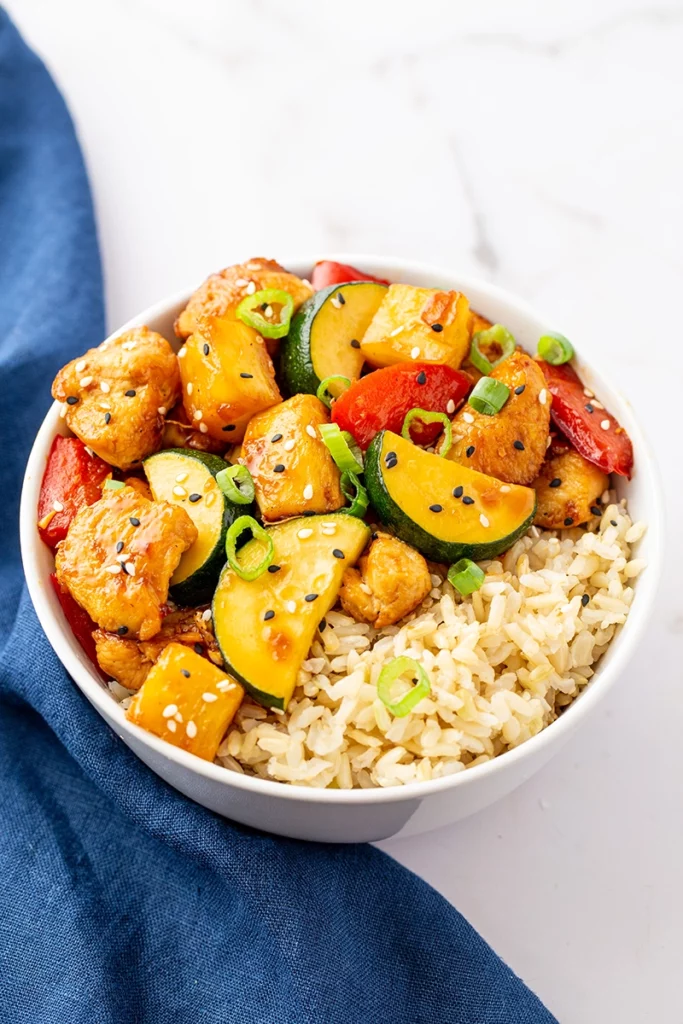
Chicken Teriyaki Pineapple Rice Bowl
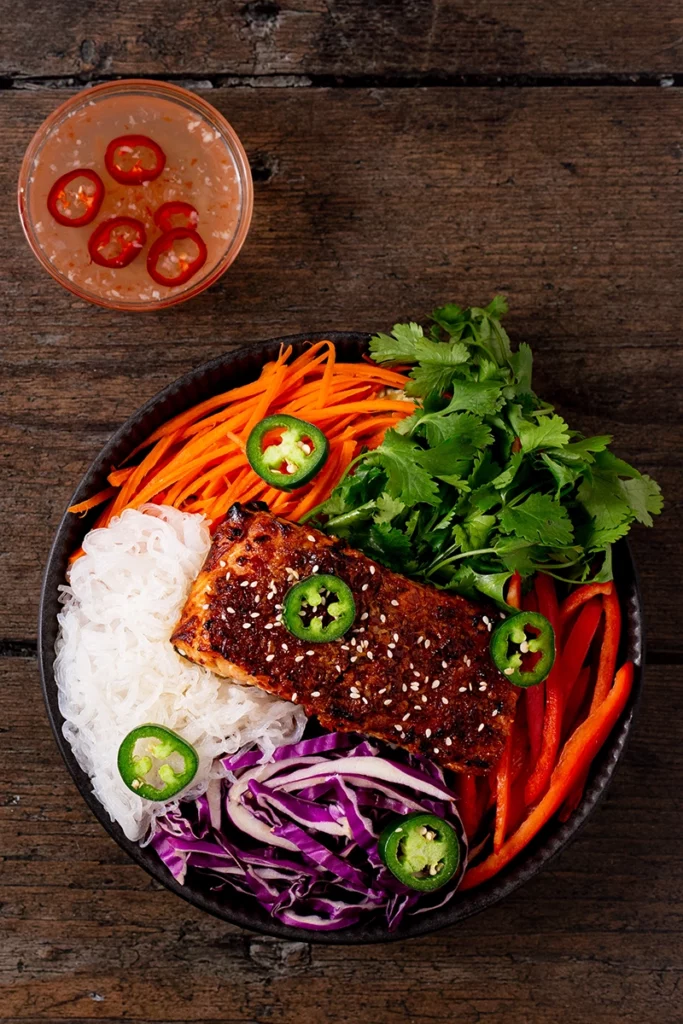
Salmon Vermicelli Bowl
Satisfying Salads
A salad doesn’t have to be boring. For a more filling option, try combining leafy greens with grains like quinoa or barley, roasted vegetables, or nuts and seeds. Top it off with lean proteins like grilled chicken or tofu and a light dressing. Try experimenting with various textures and flavors.
Hearty Soups
Soups can be a comforting and nutritious meal. Some easy recipes to try are lentil soup, tomato basil soup, or miso soup with vegetables. Make a large batch and enjoy the leftovers throughout the week, either as a main dish or as a side to sandwiches or salads.
Filling Sandwiches
Sandwiches can also be hearty and delightful. Choose whole grain bread and stuff it with lean protein like turkey or deli chicken, along with avocado, lettuce, and tomatoes. Don’t be afraid to try unusual combinations like hummus and cucumber or even sautéed mushrooms with onions.
Balanced Breakfasts
A balanced breakfast sets the tone for the day. Options include whole-grain toast with avocado and eggs, overnight oats with berries and nuts, or a green smoothie with banana and spinach. Vary your choices and ensure they contain a mix of protein, healthy fats, and whole grains.
Check out some breakfast options on The Solo Spoon blog:
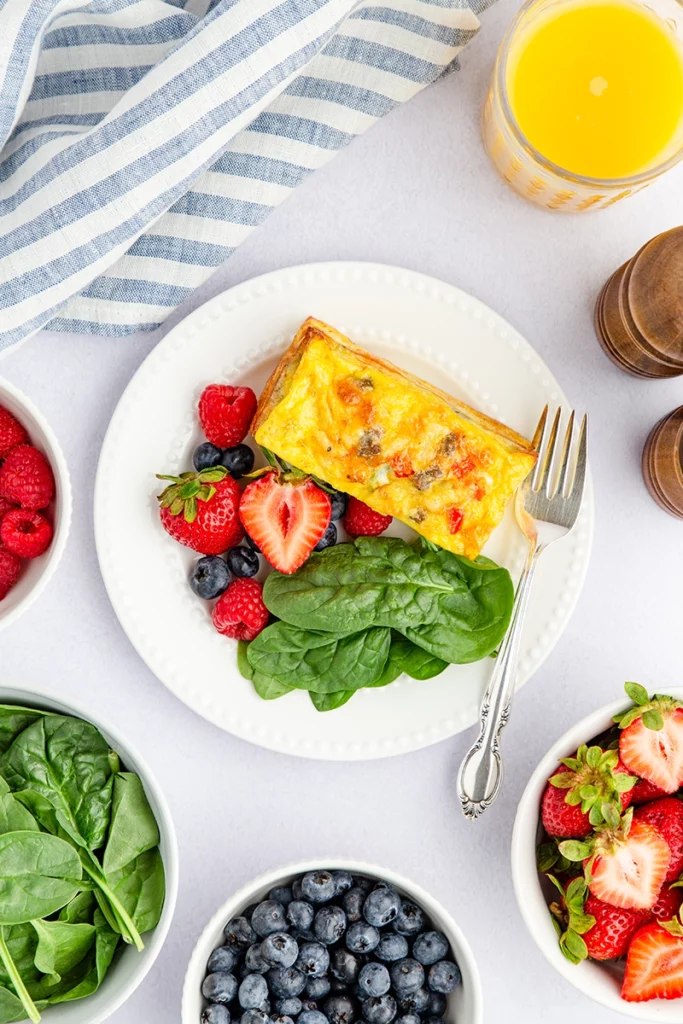
Hashbrown Egg Bake Meal Prep

Single Serve Cinnamon Sugar Baked Oats
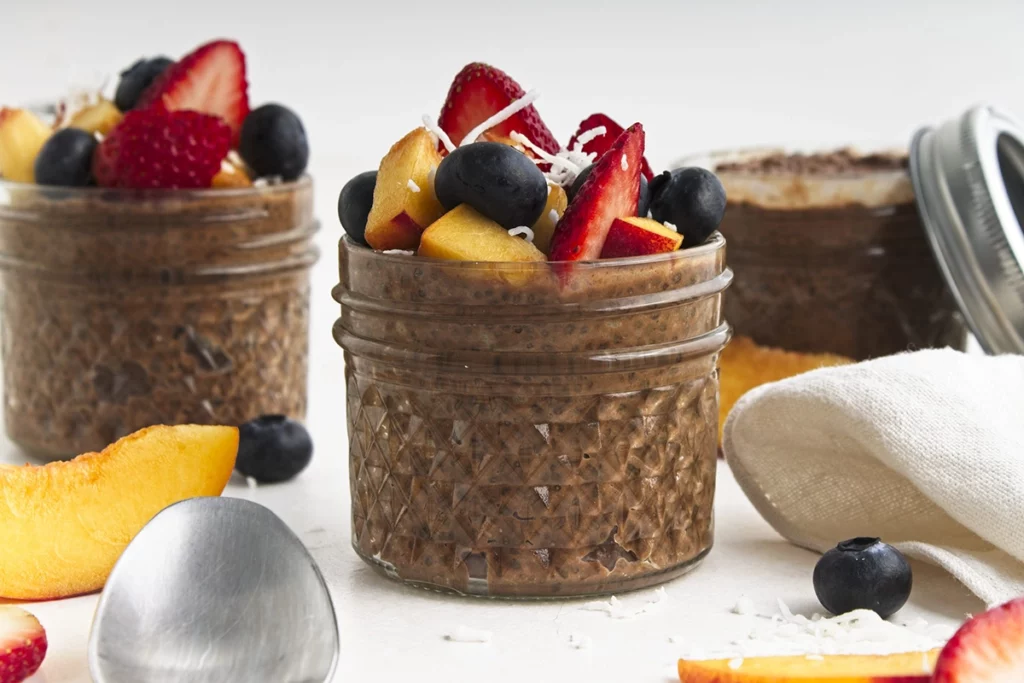
Chocolate Chia Pudding Meal Prep
Delectable Desserts
Indulge in a sweet treat without the guilt. Choose from healthier dessert options like greek yogurt with honey and berries, dark chocolate squares, or make single-serving mug cakes. Satisfy your sweet tooth without overindulging by focusing on portion control and natural sweeteners.
Check out some dessert options on The Solo Spoon blog.
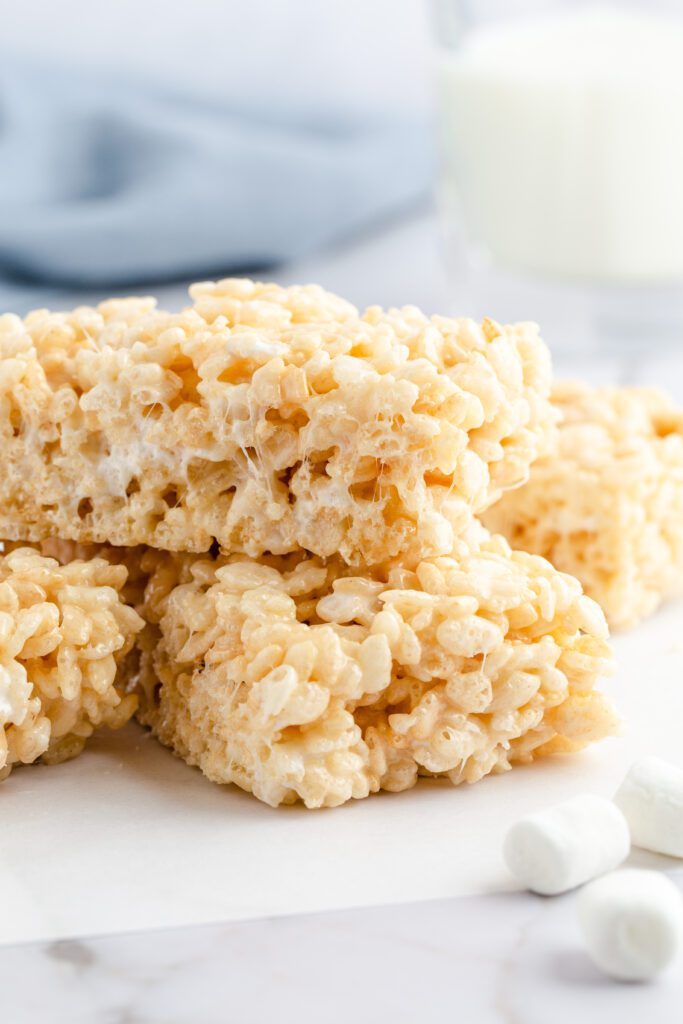
Small Batch Rice Krispie Treats
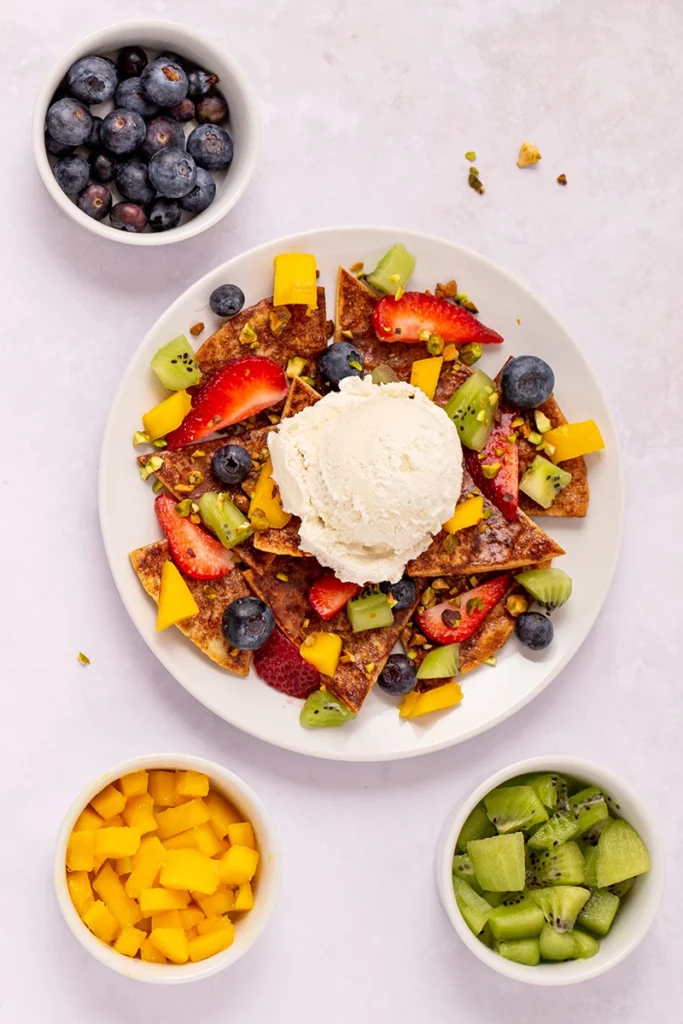
Fruit Nachos for One

Peach Crisp for One
Tips for Reducing Food Waste: Smart Strategies for Solo Cooks
As a solo cook, managing food waste can be a challenge. Fortunately, with the right approach, you can reduce waste significantly, promoting a sustainable cooking practice while saving money. Here are some smart tips on buying, storing, and using perishable ingredients wisely:
1. Buy Smart
When grocery shopping, focus on buying only what you need. Plan your meals for the week, make a list, and stick to it. Consider purchasing smaller quantities of fresh produce and perishable items to ensure you can consume them before they spoil.
2. Use Your Freezer
Your freezer is a powerful tool in combating food waste. Portion out leftovers or batch-cooked meals into single servings and freeze them for future meals. Freeze fresh fruits and vegetables that are about to spoil – they’ll be perfect for smoothies, stir-fries, or soups.
Follow these guidelines when freezing leftovers:
- Cool your food completely before freezing to avoid raising the freezer’s temperature.
- Use freezer-safe containers or heavy-duty freezer bags to prevent freezer burn.
- Label your containers with the date and type of dish.
- Wrap meat or poultry tightly to protect it from air exposure.
- Defrost frozen leftovers in your refrigerator, cold water, or the microwave before reheating.
- Keep in mind that frozen leftovers can generally be stored safely for 2-6 months. However, the quality may decline over time.
- Use Souper Cubes as an innovative and convenient solution for freezing leftovers, especially soups, stews, chilies, and sauces. These silicone trays are designed to freeze and store your leftovers in perfect portions.
3. Store Food Properly
Store foods correctly to extend their shelf life. For instance, keep root vegetables in a cool, dark place, store herbs like cut flowers in the fridge, and always keep your dry goods in airtight containers.
4. Understand Expiration Dates
Remember that “sell by” and “use by” dates are not necessarily hard and fast rules. Use your judgment – if it smells and looks fine, it’s probably still good to eat, some food might just be less fresh.
5. Utilize Leftovers Creatively
If you have leftovers, get creative! Transform yesterday’s dinner into today’s lunch with a little imagination. Use leftover chicken or leftover vegetables in a salad or stir-fry, or blend leftover veggies into a soup.
6. Make Use of Everything
Try to utilize every part of your ingredients. For example, vegetable peels can be used to make stocks, the zest of citrus fruits can add flavor to a variety of dishes, and overripe fruits are perfect for baking or smoothies.
7. Compost Food Scraps
If you have access to outdoor space or a local composting facility, composting is an excellent way to make use of your organic food waste. Compost can help improve your soil’s health and fertility, making your plants happy.
By adopting these practices, you’ll not only reduce food waste but also become a more mindful, efficient, and sustainable cook.

Cooking for One Frequently Asked Questions
Conclusion
Embarking on your journey of cooking for one may initially seem like a daunting task. It can bring challenges unique to solo cooking, such as portion control, meal planning, and avoiding food waste. However, as we’ve discussed in this blog post, these hurdles can indeed be transformed into exciting opportunities to discover your culinary skills, experiment with new dishes, and enjoy the flexibility that comes with catering solely to your palate.
Armed with our tips and strategies for single people, you now possess the tools to make cooking for one not just manageable, but truly enjoyable. From mastering the art of meal planning and prepping to choosing the right cooking techniques and equipment, we hope this guide has empowered you to approach your kitchen with a renewed sense of confidence and enthusiasm.
Remember, cooking solo is a delightful form of self-care and an opportunity to explore the limitless world of culinary arts at your own pace. The kitchen is your canvas, and you hold the brush. Whether you’re a single individual, a college student, or someone who just needs to whip up a meal on your own occasionally, these strategies will make your solo cooking journey a rewarding experience. Embrace the joy of cooking for one and savor each bite knowing it was made by you, for you.
Our Favorite
Cooking for One Resources
pin this for later!
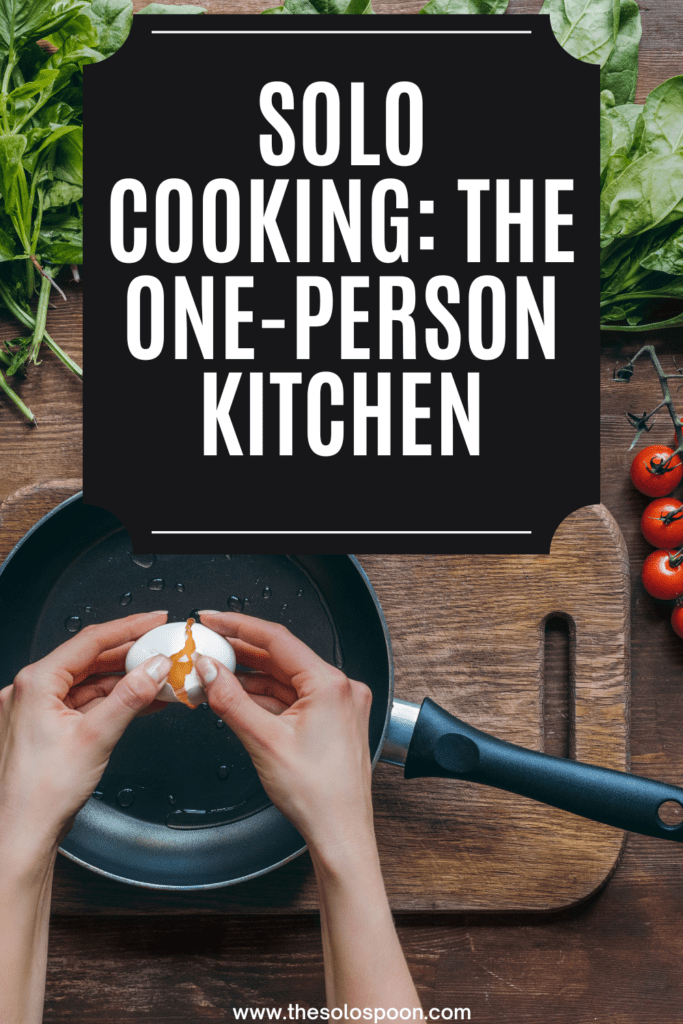







![Microwave Cookware 6 in 1 [ Made in Japan] Freezer & Oven Safe, Vegetable, Rice, Ramen Steamer BPA Free (Black) Microwave Cookware 6 in 1 [ Made in Japan] Freezer & Oven Safe, Vegetable, Rice, Ramen Steamer BPA Free (Black)](https://m.media-amazon.com/images/I/519tEWYceqL._SL500_.jpg)






















